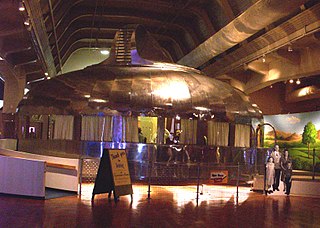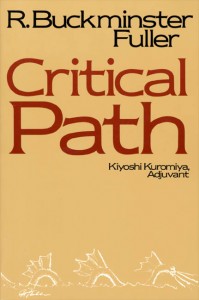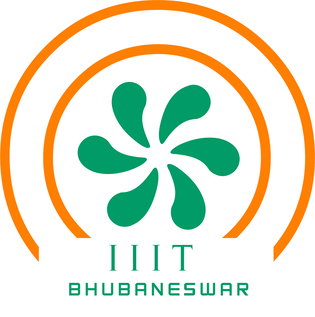Gameplay, format and resources
| | This section needs expansionwith: details on how the game is played, and what equipment are typically used in gameplay. You can help by adding to it. (February 2023) |
World Game, sometimes called the World Peace Game, is an educational simulation developed by Buckminster Fuller in 1961 to help create solutions to overpopulation and the uneven distribution of global resources. This alternative to war games uses Fuller's Dymaxion map and requires a group of players to cooperatively solve a set of metaphorical scenarios, thus challenging the dominant nation-state perspective with a more holistic "total world" view. The idea was to "make the world work for 100% of humanity in the shortest possible time through spontaneous cooperation without ecological damage or disadvantage to anyone," [1] thus increasing the quality of life for all people.
Fuller first publicly proposed the concept as the core curriculum at the (then new) Southern Illinois University Carbondale. He founded there, together with its then executive director John McHale, the World Resources Inventory, an institute responsible for conducting the research required for the game launch. Fuller proposed it in 1964 for the 1967 International and Universal Exposition in Montreal, Quebec, Canada, but the project was eventually rejected.
In a preamble to World Game documents released in 1970, Fuller identified it very closely with his 'Guinea Pig 'B' experiment' and his 'Comprehensive Anticipatory Design Science' lifework. He claimed intellectual property rights as well to control what he considered to be misapplication of his idea by others. He also claimed he had been playing it 'longhand' without the assistance of computers since 1927. [2]
In 1972, the World Game Institute was founded in Philadelphia, Pennsylvania, by Fuller, Medard Gabel, Howard J. Brown and others.
In 1980, the World Game Institute and the World Resources Inventory published the World Energy Data Sheet. The World Energy Data Sheet compiled a nation by nation summary of energy production, resources, and consumption. The information was compiled in tables and map formats. The project was researched by Seth Snyder and overseen by Medard Gabel. The work was used during a World Game (Philadelphia, summer 1980).
By 1993, the World Game Institute developed and sold an educational software package called Global Recall, which contained global data, maps, an encyclopedia of world problems, and tools for developing solutions to world problems. The package was a computer-based simulation game intended for use by high school and college students in learning about world problems and how to solve them. [3]
In 2001, a for-profit educational company named o.s. Earth, Inc. purchased the principal assets of the World Game Institute and has been offering a Global Simulation Workshop that is a 'direct descendant of Buckminster Fuller's famous World Game.' [4]
| | This section needs expansionwith: details on how the game is played, and what equipment are typically used in gameplay. You can help by adding to it. (February 2023) |

Richard Buckminster Fuller was an American architect, systems theorist, writer, designer, inventor, philosopher, and futurist. He styled his name as R. Buckminster Fuller in his writings, publishing more than 30 books and coining or popularizing such terms as "Spaceship Earth", "Dymaxion", "ephemeralization", "synergetics", and "tensegrity".

The Dymaxion House was developed by inventor and architect Buckminster Fuller to address several perceived shortcomings with existing homebuilding techniques. Fuller designed several versions of the house at different times—all of them factory manufactured kits, assembled on site, intended to be suitable for any site or environment and to use resources efficiently. A key design consideration was ease of shipment and assembly.
Computer science is the study of the theoretical foundations of information and computation and their implementation and application in computer systems. One well known subject classification system for computer science is the ACM Computing Classification System devised by the Association for Computing Machinery.

The Dymaxion map or Fuller map is a projection of a world map onto the surface of an icosahedron, which can be unfolded and flattened to two dimensions. The flat map is heavily interrupted in order to preserve shapes and sizes.

James Tennant Baldwin, often known as Jay Baldwin or J. Baldwin, was an American industrial designer and writer. Baldwin was a student of Buckminster Fuller; Baldwin's work was inspired by Fuller's principles and, in the case of some of Baldwin's published writings, he popularized and interpreted Fuller's ideas and achievements. In his own right, Baldwin was a figure in American designers' efforts to incorporate solar, wind, and other renewable energy sources. In his career, being a fabricator was as important as being a designer. Baldwin was noted as the inventor of the "Pillow Dome", a design that combines Buckminster Fuller's geodesic dome with panels of inflated ETFE plastic panels.
Computational science, also known as scientific computing, technical computing or scientific computation (SC), is a division of science that uses advanced computing capabilities to understand and solve complex physical problems. This includes

A virtual globe is a three-dimensional (3D) software model or representation of Earth or another world. A virtual globe provides the user with the ability to freely move around in the virtual environment by changing the viewing angle and position. Compared to a conventional globe, virtual globes have the additional capability of representing many different views of the surface of Earth. These views may be of geographical features, man-made features such as roads and buildings, or abstract representations of demographic quantities such as population.

Operating Manual For Spaceship Earth is a short book by R. Buckminster Fuller, first published in 1969, following an address with a similar title given to the 50th annual convention of the American Planners Association in the Shoreham Hotel, Washington D.C., on 16 October 1967.
Medard Gabel is the executive director of the non-profit research and development organization EarthGame. He also leads BigPictureSmallWorld and the Global Solutions Lab. He is the former executive director of the World Game Institute and director of The Cornucopia Project and the Regeneration Project at Rodale Press. He has done work for Tanzania on regenerative agriculture, as well as work in Costa Rica, Spain, The Netherlands, Japan, China, Malaysia and elsewhere. He has written six books on world food and energy problems and solutions, the U.S. food system, multinational corporations, and strategic planning.

Computational Engineering is an emerging discipline that deals with the development and application of computational models for engineering, known as Computational Engineering Models or CEM. Computational engineering uses computers to solve engineering design problems important to a variety of industries. At this time, various different approaches are summarized under the term Computational Engineering, including using computational geometry and virtual design for engineering tasks, often coupled with a simulation-driven approach In Computational Engineering, algorithms solve mathematical and logical models that describe engineering challenges, sometimes coupled with some aspect of AI, specifically Reinforcement Learning.
The Global Energy Network Institute (GENI) is a research and education organization founded by Peter Meisen in 1986 and registered as a 501(c)(3) non-profit organization in 1991. GENI's focus is on the interconnection of electric power transmission networks between nations and continents, emphasizing tapping abundant renewable energy resources, and utilizing the efficiencies of seasonal, time of day, and load differences around the world.

Critical Path is a book written by US author and inventor R. Buckminster Fuller with the assistance of Kiyoshi Kuromiya. First published in 1981, it is alongside Operating Manual for Spaceship Earth one of Fuller's best-known works. Vast in its scope, it describes Fuller's own vision of the development of human civilization, economic history, and his highly original economic ideology based, amongst other things, on his detailed description of why scarcity of resources need no longer be a decisive factor in global politics.
Ephemeralization, a term coined by R. Buckminster Fuller in 1938, is the ability of technological advancement to do "more and more with less and less until eventually you can do everything with nothing," that is, an accelerating increase in the efficiency of achieving the same or more output while requiring less input. The application of materials and technology in modern cell phones, compared to older computers and phones, exemplify the concepts of Ephemeralization whereby technological advancement can drive efficiency in the form of fewer materials being used to provide greater utility. Fuller's vision was that ephemeralization, through technological progress, could result in ever-increasing standards of living for an ever-growing population. The concept has been embraced by those who argue against Malthusian philosophy.

International Institute of Information Technology, Bhubaneswar is a self-sustaining state university located in Bhubaneswar, Odisha, India. It was established in 2006 under the IIIT Act of 2004 by the Government of Odisha.
Synergetics is the empirical study of systems in transformation, with an emphasis on whole system behaviors unpredicted by the behavior of any components in isolation. R. Buckminster Fuller (1895–1983) named and pioneered the field. His two-volume work Synergetics: Explorations in the Geometry of Thinking, in collaboration with E. J. Applewhite, distills a lifetime of research into book form.

The Geoscope was a proposal by Buckminster Fuller around 1960 to create a 200-foot-diameter (61 m) globe that would be covered in colored lights so that it could function as a large spherical display. It was envisioned that the Geoscope would be connected to computers which would allow it to display both historical and current data, and enable people to visualize large scale patterns around the world. Several projects by his students to build a "miniature Earth", starting with a 20-foot version at Cornell University in 1952, were precursors of the Geoscope proposal. Before proposing the Geoscope, Fuller had invented the Dymaxion map, a novel map projection for the whole Earth.

The Buckminster Fuller Challenge is an annual international design competition that awards $100,000 to the most comprehensive solution to a pressing global problem. The Challenge was launched in 2007 and is a program of The Buckminster Fuller Institute. The competition, open to designers, artists, architects, students, environmentalists, and organizations world-wide, has been dubbed "Socially-Responsible Design's Highest Award" by Metropolis Magazine.